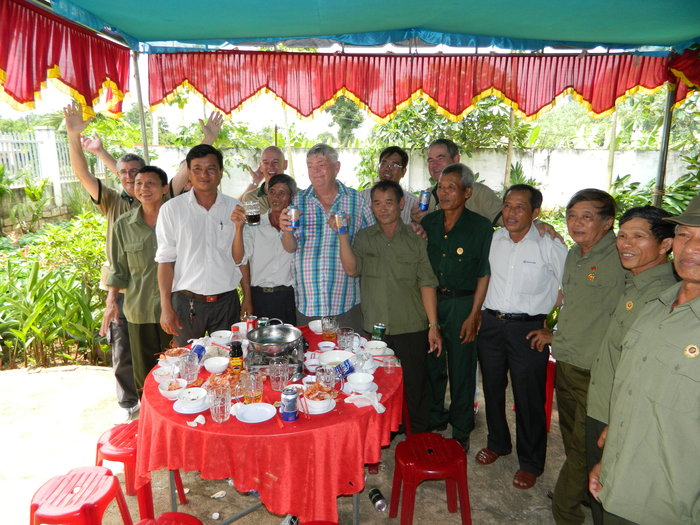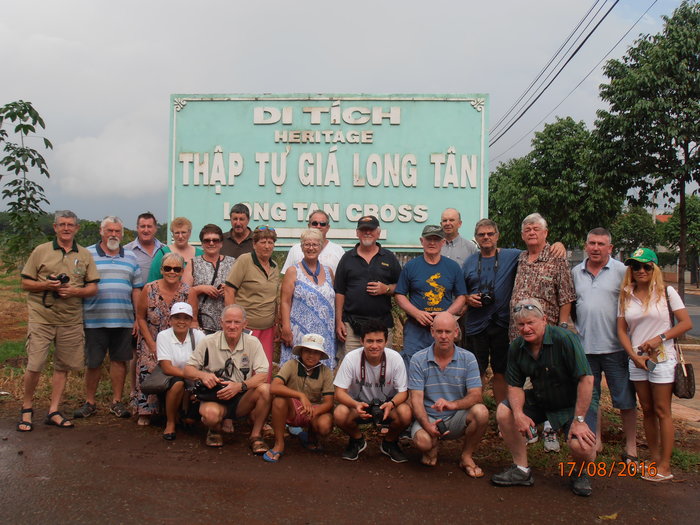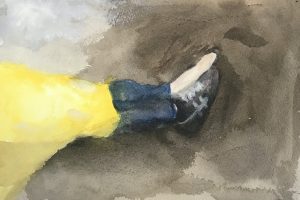Thousands of Australians made the journey to Vietnam for the 50th anniversary of the Battle of Long Tan on August 18 and were left disappointed after the commemoration event was cancelled at the last minute.
Retiree reader Terry Mack* was one of those Australians and here he shares in his own words what really happened in Vietnam for the 50th Anniversary of the Battle of Long Tan.
“I am a Vietnam veteran and together with my wife and son, recently conducted a 15 day tour covering half of Vietnam and also the areas where the Australian army was based during the war.
I first returned to Vietnam 18 years ago and have been conducting tours for the past 15 years.
Our tour group of 28 included Vietnam veterans, wives and families plus others interested in seeing the country and attending the 50th Anniversary of the Battle of Long Tan.
Also on our tour was James (Jimmy) Richmond who is one of the survivors of the actual battle who was returning to Vietnam for the first time. Jimmy was shot/wounded twice during the battle and almost returned back to Australia on the first day of our tour due to feeling uneasy about the return, but everyone in our group looked after him and he enjoyed the tour.
We had been hearing stories about the large number of Australians (2000 plus) arriving and planning to visit the Long Tan Cross to pay their respects on the anniversary day (August 18) so we decided to make a visit for our tour group on the afternoon of August 17 instead.
Unfortunately, we were stopped by 14 police at the turnoff road to the memorial cross and told that no one was permitted to enter the area today and to return back the following day.
The following day we made a decision to return early before other groups and arrived at the turnoff road at 8 am only to be told by a large police and local government presence that a decision had been made to cancel the anniversary pilgrimage and prohibit all entry to the Long Tan Cross site. There were two young Vietnamese officials who had previously studied in Australian universities acting as interpreters.
Our tour group were obviously very disappointed so my wife (who was born in Vietnam and is now an Australian citizen) and myself managed to negotiate with the police, secret police and the head government official from the district to at least allow some of our group to visit to pay their respects and lay flowers. After a lot of discussions we were given permission for one person, then two and finally a maximum of three to proceed and lay our two wreaths, but on the understanding that no photos, videos, music, songs or memorial service and only a maximum visit of two minutes at the cross.
Three of us were driven and escorted in the secret police car one kilometre to the cross and as Jimmy Richmond was our main man I escorted him to assist laying our flower wreaths and approximately 20 additional flowers. Jimmy also placed 18 red poppies at the cross (one for each soldier who had been killed) and recited the Ode of Remembrance.
We found out later that day that we were lucky to be the first to visit the cross even before the Australian ambassador had arrived.
Our group proceeded to tour around the old Australian task force base area of Nui Dat and had lunch which we had prearranged with past ‘enemy’ Viet Cong (VC) and North Vietnamese Army (NVA) – four government and media officials plus two secret police also arrived for their free lunch and drinks. In total more than 70 people attended and it was amazing what 7 bottles of JW red and black plus 4 cases of beer and local rice wine can do to make everyone happy!

During our lunch, my wife had discussions with the two secret police about our whole tour group gaining access to the ‘Cross’ site and after many telephone calls were advised to remove our ‘Australian Army Veterans’ tour banner from the bus and depart immediately for the cross site as they had advised our bus number and that many other buses were starting to arrive.
When we arrived approximately 1.30pm at the turn off road there were many buses and mini vans and after being told to join this line, then that line, we were eventually given permission to drive to another turn off road that took us closer to the “Cross” and waited for three hours.
The stories we had been receiving through Australian media was that all entry had been refused and only 100 per time could visit but no media, videos, photos, music or speeches would be allowed. The reason given for the Vietnamese cancelling and refusing entry was that it was sensitive to the local people and that they were not happy. This from my observations was not true as we had met many local people, including previous enemy, and everyone was in good spirits and happy to see Australians.
The truth was that only small groups of five at a time (not 100) were allowed to visit the cross and no more flowers or wreaths permitted.
Two hours into our wait in the bus lineup many people got off their buses and were getting very angry and upset with the long delay with what was happening with some stating that they wanted to ‘punch’ the police which could have escalated into a major international incident.
At 3.25pm (and still waiting) I made a decision to conduct a remembrance service in the rubber trees close to our bus as 3.40pm was the actual time that the battle had commenced. When we all started walking into the rubber trees the police and Australian consulate officials thought that we were making a run towards the cross, which was amusing.
Our bus was the last to gain entry to visit and I asked the Australian Ambassador who had been there all day if he intended to make a point and remain all night as many people said that they would also stay in protes, but he said that he would be leaving shortly. There were still dozens of buses refused entry to the site and turned around.
Many Vietnam Veterans who were involved in the battle were unable to visit the cross site to pay their respects on the day. They commentated that they were all very disappointed and that it was political.
From what we are able to find out, Jimmy Richmond was the only surviving soldier of the battle to make the visit to the cross on the 18th – the 50th Anniversary day.
The planned concert with ‘Little Pattie’ with 400 to attend on the 17th was not allowed to proceed with the police switching the power off and the dinner on the 18th with over 400 booked including 50 past enemy and government officials invited did proceed, but had many restrictions with no media, no video or photos, no speeches and no entertainment or music. Only 15 past enemy attended as the Vietnamese government had reportedly told them not to attend.
The reports from the Veteran’s Affairs Minister, the Foreign Affairs Minister and the Australian government stated that they had been in negotiations with the Vietnamese government for over 18 months regarding the anniversary, but obviously did not have a plan B in place.
Many visitors were very angry and stated that Australia gives millions of dollars in aid to Vietnam and it should be now stopped, however the corrupt people at the top would not care and if stopped would only effect the many poor people in need. The majority of people in Vietnam are very friendly and are welcoming to Australians.”
What do you think of the way the Veterans were treated? Do you think the situation could have been better handled?
*Name has been changed.























i and my friends hired a taxi went the day before .only to be told turn around and go home !!!
On the 18th one of my friends boarded the last bus with people that desperately wanted to pay respects at the site , they also were turned around ,
As to why this occurred we will never know , rather sad but after all its on private property in Vietnam !!!!!!!!!!!!!